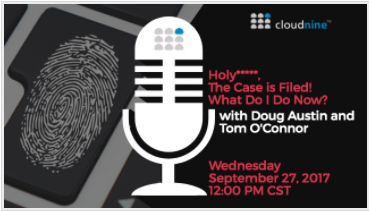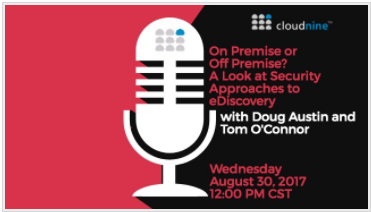If You’ve Been Affected by the Recent Storms, CloudNine Wants to Help
Mother Nature has dealt this part of the world a tough couple of weeks. First, Hurricane Harvey hit the Gulf Coast, causing major damage and flooding in Houston and other areas. Then, this past weekend, Hurricane Irma has caused major damage in the Caribbean and in Florida and is continuing to wreak havoc to other parts of the country as we speak.
In Houston, our CloudNine family was very fortunate and blessed. None of our team members experienced any significant damage from Hurricane Harvey. Our platform continued to be available to our clients throughout the storm and its aftermath and our office remained up and running; though, because there was so much flooding throughout the city and driving was discouraged, most of our team members worked remotely throughout that week. Despite that, we were business as usual, providing software and services to our clients.
However, most (if not all) of our team members have family members or close friends who were affected – either by suffering damage in their homes and businesses or being evacuated (or both). Many of us at CloudNine, like many others in the Houston area and elsewhere, have helped to pitch in and help our neighbors recover.
As Craig Ball noted in his recent blog post regarding the disaster in Houston, the loss of property for law firms and other organizations extends to digital devices and media and potential loss of data on that media. When Hurricane Katrina hit New Orleans years ago, Tom O’Connor coordinated an effort to help firms in that area and others (such as Craig and Rob Robinson) assisted in that effort. Both Tom and Craig have discussed plans to undertake a similar effort to help those affected this time and I will certainly be happy to help in any way I can, including to help get the word out as more information is known about that effort.
Recovering the data is one challenge (and several organizations are offering to help there), recovering an organization’s IT infrastructure is another. Many firms will have to replace workstations, servers and networks. Doing so won’t be cheap and may not happen overnight. With that in mind, CloudNine is offering to host data for firms and organizations affected by the recent hurricanes for FREE for up to six months to enable those firms and organizations to be able to access that data while they rebuild. If your organization has been affected by these storms and you need the ability to access your data for a period of time while you rebuild, or to save costs in hosting for a case so that you can apply those savings to rebuilding your infrastructure, CloudNine can help.
To learn more, please contact us at salessupport@cloudnine.com and mention the FREE six month hosting offer.
And, if you’re interested in helping those affected by the hurricanes, here are a couple of resources to do that:
- Houston Texans football player J.J. Watt has established the Houston Flood Relief Fund for victims of Hurricane Harvey, which is (as of Monday morning) up over $31 million in donations. To donate, click here.
- Houston Mayor Sylvester Turner has also established the Hurricane Harvey Relief Fund, which accepts donations for flood relief victims. The organization will accept checks, money orders, bank wire transfers, stock, corporate bonds and other marketable securities. For donation instructions, click here.
- GlobalGiving’s Irma Relief Fund is accepting donations here. It vets the local organizations it helps fund and, according to The New York Times, is well-regarded by charity watchdogs.
Our thoughts and prayers are with all of those affected by the recent storms.
Disclaimer: The views represented herein are exclusively the views of the author, and do not necessarily represent the views held by CloudNine. eDiscovery Daily is made available by CloudNine solely for educational purposes to provide general information about general eDiscovery principles and not to provide specific legal advice applicable to any particular circumstance. eDiscovery Daily should not be used as a substitute for competent legal advice from a lawyer you have retained and who has agreed to represent you.










